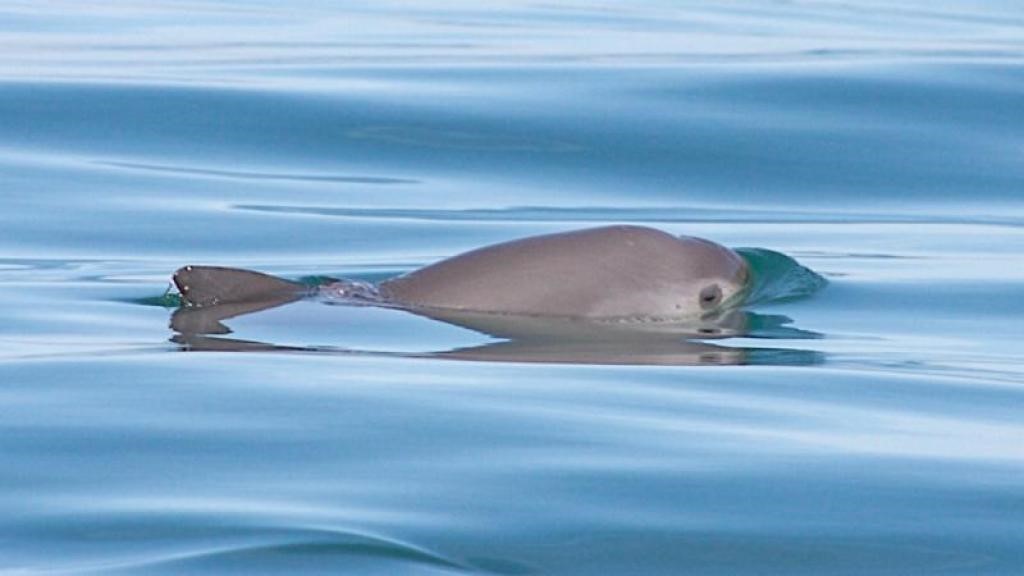Description

Disclaimer: Copyright infringement not intended.
Context
- The International Whaling Commission (IWC) issued an "extinction alert" on August 7, 2023, highlighting the critical plight of the vaquita porpoise.
- With only 10 individuals remaining in the northern Gulf of California or Sea of Cortez in Mexico, urgent actions are needed to prevent the extinction of this species.
- The alert emphasizes the need for global recognition, support, and immediate efforts to rescue the vaquita population from the brink of extinction.
Details
The Vaquita: A Precarious Existence
- The vaquita porpoise, unique to the Gulf of California, has seen its population plummet from around 570 individuals in 1997 to a mere 10 in 2018.
- Despite its small population size, the IWC believes that extinction is not yet inevitable and aims to rally efforts to save the species.
- The vaquita's habitat is confined to the northernmost part of the Gulf of California, placing it in a vulnerable situation.
Challenges and Solutions
- The vaquita's decline is primarily attributed to bycatch in gillnets, a threat exacerbated by the illegal international trade in totoaba fish, sought for their swimbladders in Chinese cuisine.
- Though a clear solution exists – replacing gillnets with safe alternatives in vaquita habitats – progress has been limited due to challenges in enforcement and the presence of the illegal totoaba trade.
- A ban on gillnets in the core habitat of the vaquita, strictly enforced, could provide a chance for their recovery, emphasizing the significance of effective conservation actions.
Lessons Learned and Immediate Focus
- The situation of the vaquita underscores the importance of early and multi-disciplinary actions that address broader factors contributing to endangerment.
- The immediate focus, however, remains on the single action needed to save the vaquita from extinction.
- The vaquita's resilience and the potential for recovery with determined efforts highlight the importance of global cooperation and support.

About Vaquita
- The vaquita (Phocoena sinus) is a critically endangered species of porpoise that is native to the northern Gulf of California, also known as the Sea of Cortez, in Mexico.
- It is often referred to as the "panda of the sea" due to its striking appearance and the urgent need for conservation efforts to save it from extinction.
Description and Appearance
- The vaquita is the smallest and most endangered cetacean species, with adults typically reaching lengths of about 4.6 to 5 feet (1.4 to 1.5 meters) and weighing around 120 pounds (55 kilograms).
- They have a distinctive appearance, characterized by a dark ring around each eye and dark patches on their lips and around their mouth, which create a "smiling" appearance.
- Their body is primarily grayish-blue with lighter patches on the sides and a pale gray or white belly.
Habitat and Range
- The vaquita is found exclusively in the upper Gulf of California, a narrow body of water separating the Baja California Peninsula from the Mexican mainland.
- They prefer shallow, warm waters and are typically found in depths ranging from 20 to 50 meters.
Threats and Conservation Status
- The vaquita's critical endangerment is primarily attributed to bycatch, the accidental capture of marine animals in fishing gear intended for other species.
- The illegal gillnet fishing for totoaba, a large fish whose swim bladders are highly valued in traditional Chinese medicine, is the main driver of vaquita decline. Vaquitas often become entangled in these nets and drown.
- The vaquita population has declined drastically over the past few decades. In 1997, there were an estimated 567 individuals; by 2019, only around 10 individuals were believed to be left in the wild.
- In 2019, the Mexican government launched a conservation plan that included a two-year ban on gillnet fishing in the vaquita's habitat, as well as efforts to promote alternative fishing practices. However, enforcement has proven challenging due to illegal fishing activities and limited resources.
Conservation Efforts
- The conservation efforts for the vaquita involve a combination of measures aimed at curbing illegal fishing, protecting their habitat, and supporting local communities.
- Various conservation organizations, such as the VaquitaCPR (Conservation, Protection, and Recovery) program, have been working on initiatives to protect vaquitas. This includes efforts to locate and safely relocate vaquitas to a temporary sanctuary, away from gillnet fishing areas.
- International cooperation and awareness campaigns have also been initiated to raise awareness about the vaquita's plight and the need for its protection.
Challenges and Future Prospects
- The biggest challenge in vaquita conservation is effectively eliminating illegal gillnet fishing in the Gulf of California, as well as tackling the demand for totoaba swim bladders.
- The vaquita's precarious situation has led to debates about whether or not to initiate captive breeding programs. Some experts argue that the species' small population size and the challenges of captivity make this a risky proposition.
Role in Ecosystem
- Vaquitas are important members of their ecosystem as predators of small fish and squid. Their presence helps maintain the balance of marine food webs.
The International Whaling Commission
- The International Whaling Commission (IWC) is a global intergovernmental organization dedicated to the conservation of whales and the management of whaling activities.
- Founded in 1946, its primary mission is to ensure the sustainable utilization of whale resources while protecting these marine mammals from overexploitation.
- The IWC plays a vital role in shaping international policies and regulations concerning whaling and cetacean conservation.
Historical Context
- The IWC was established in response to growing concerns about the decline of whale populations due to commercial whaling practices.
- Recognizing the need for coordinated efforts to conserve these marine species, nations came together to form the IWC through the signing of the International Convention for the Regulation of Whaling (ICRW).
Objectives and Functions
The IWC's key objectives include:
- Establishing regulations for whaling activities to prevent overexploitation.
- Promoting research and scientific collaboration to enhance understanding of whale populations and their ecosystems.
- Encouraging conservation measures to protect whale species and their habitats.
- Addressing emerging threats to marine mammals, such as habitat degradation, pollution, and climate change.
- Facilitating cooperation among member nations to ensure the sustainable management of whale resources.
Membership and Structure
- The IWC consists of member countries, both whaling and non-whaling nations, that adhere to the ICRW.
- As of 2020, the IWC had 88 member countries.
- The organization operates through annual meetings, where member nations discuss and make decisions on various issues related to whaling, conservation, and management.
Key Initiatives
- Moratorium on Commercial Whaling: In 1986, the IWC imposed a moratorium on commercial whaling to allow whale populations to recover from decades of overhunting. However, this decision has been a subject of ongoing debate and disagreement among member nations.
- Scientific Research: The IWC encourages and supports scientific research on whale populations, their behavior, and their habitats. Research findings contribute to informed conservation and management decisions.
- Conservation Measures: The IWC promotes the implementation of conservation measures to protect whales and their ecosystems. This includes advocating for marine protected areas and addressing threats such as ship strikes, entanglement in fishing gear, and habitat degradation.
- Aboriginal Subsistence Whaling: The ICRW recognizes the subsistence needs of indigenous communities and permits limited whaling for cultural and nutritional purposes.
Challenges and Criticisms
- Resumption of Whaling: Some member nations advocate for the resumption of limited commercial whaling, arguing that certain whale populations have recovered sufficiently to support sustainable hunting.
- Scientific vs. Commercial Whaling: The distinction between scientific whaling and commercial whaling has been a point of contention, with concerns raised about the exploitation of loopholes in the moratorium.

Conclusion
The vaquita's critical state demands collective efforts to prevent its extinction. The IWC's "extinction alert" serves as a clarion call to action, urging global recognition of the warning signs and advocating for measures that can rescue this unique species. As the world faces the challenge of safeguarding biodiversity, the plight of the vaquita stands as a reminder of the urgent need for effective conservation actions and international cooperation to ensure the survival of our planet's diverse ecosystems.
|
PRACTICE QUESTION
Q. Which of the following statements about the vaquita is/are correct?
A) It is a large species of whale native to the Atlantic Ocean.
B) The primary threat to its population is illegal gillnet fishing for totoaba.
C) Vaquitas are commonly found throughout the world's oceans.
D) Their body is primarily grayish-blue with lighter patches on the sides.
Options:
a) 1 and 3
b) 2 and 4
c) 2 only
d) 2 and 3
Answer: b
|
https://www.downtoearth.org.in/news/wildlife-biodiversity/plight-of-the-vaquita-forces-international-whaling-commission-to-issue-first-extinction-alert-91057












